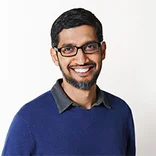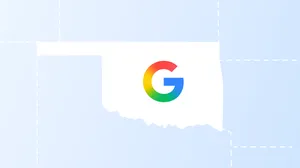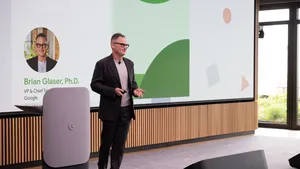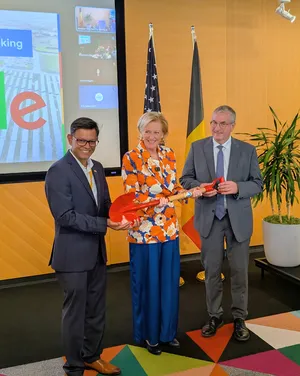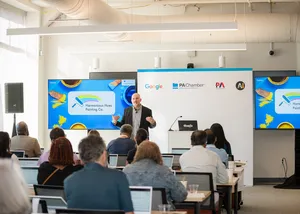Looking beyond code to make the future work for everyone
It’s clear that people need more options to thrive in the digital world. The next generation of workers will depend on how we evolve education and tech in the coming years.
When you think of how to help our workforce thrive and find opportunities in the digital world, the first word that often comes to mind is “code.” Nearly every digital-skills program over the past decade has focused on computer science, with a lot of emphasis on young students. Coding, of course, is vital and a core skill for America to invest in. Google has focused resources and employee time helping people from all backgrounds to code—from helping introduce students to the basics, to offering 10,000 free Udacity courses in coding for apps, to training other businesses in how to become experts in programming artificial intelligence. All of this will help meet the growing need for workers who can write the software that will power everyone’s businesses. And it will help countless people more move into in-demand, high paying careers.
But the focus on code has left a potentially bigger opportunity largely unexplored. In the past, people were educated, and learned job skills, and that was enough for a lifetime. Now, with technology changing rapidly and new job areas emerging and transforming constantly, that’s no longer the case. We need to focus on making lightweight, continuous education widely available. This is just as crucial to making sure that everyone can find opportunities in the future workplace.
There are two areas that are relevant here. The first is around basic digital skills training. An office admin, for example, now needs to use online programs to run budgets, scheduling, accounting and more. While digital technology should be empowering people, it can often alienate them from their own jobs.
Some of these skills didn’t exist five years ago, yet workers are today expected to have them. A recent report by the Brookings Institute says that jobs in the U.S. requiring “medium-digital” skills in America have grown from 40 percent of jobs in 2002 to 48 percent of jobs in 2016.
The digital skills necessary to do these jobs are far easier to learn than code, and should be easier to deliver at scale. For example, we rolled out a “Grow with Google” program, and partnered with Goodwill last year to incorporate digital skills training into its already amazing training infrastructure for job seekers. One trainee spoke of the value of her own experiences. “Before I learned digital skills, I felt unsure of myself,” she says. “Now I feel confident. You have to feel confident in what you do in order to be successful and move on in life.”
Through these trainings, people learn about using technology to research, to plan events, analyze data and more. They don’t require a formal degree or certificate. We think there’s great scope to expand this model, and teach hard and soft skills that can empower a workforce that has access to constant, accredited learning opportunities as job requirements change.
Second, we have a huge opportunity to rethink training for jobs that are core to the digital economy, but that don’t require coding. IT support is a clear opportunity, here. Just as anyone has a clear path to becoming an auto-mechanic, we need a similar path to the 150,000 open positions for IT support, in which people maintain the machines and software that underpin technology services. Yet no training today efficiently connects people to that opportunity.
We learned this ourselves through an IT-support apprenticeship program we offered, with the Bay Area’s Year Up job-training program. Over 90 percent of the young adults met or exceed Google’s expectations as apprentices, but we noticed they didn’t return to apply for full-time jobs. It turned out that the standard, two-year computer science degree cost too much time and money, teaching skills that those former apprentices simply didn’t need to start their careers.
We should make sure that the next generation of jobs are good jobs, in every sense.
So we developed, and just announced, a new IT certificate program alongside Coursera that’s far more focused and flexible. We believe in just 8 to 12 months, it teaches everything you need to be an IT support technician. IT support jobs are predicted to grow by 10 percent from 2016 to 2026, faster than most other occupations the government tracks. We’re giving 10,000 people free access to the course and will connect graduates to job opportunities at places like Bank of America, Walmart, Sprint, GE Digital, Infosys, TEKSystems, and the University of Pittsburgh Medical Center—as well as Google. If the program works, the payoff will be substantial. The median annual wage for IT support is close to the median salary in America.
You can imagine this lightweight, focused model being applied to other tech-related jobs of the future: robust certification programs for project management, delivery fleet operation, and other jobs no one can imagine today, but that will be obvious—and ubiquitous—in five years’ time.
Moving beyond code and intensive degrees to these constant, lightweight and ubiquitous forms of education will take resources and experimentation. But that effort should help close today’s skills gaps, while making sure future skills gaps don’t open. That’s part of the reason Google has invested $1 billion over five years to help find new approaches to connect people to opportunities at work and help small and medium businesses everywhere grow in the digital economy. We should make sure that the next generation of jobs are good jobs, in every sense. Rather than thinking of education as the opening act, we need to make sure it’s a constant, natural and simple act across life—with lightweight, flexible courses, skills and programs available to everyone.
This essay also appeared on NBC News Think.
